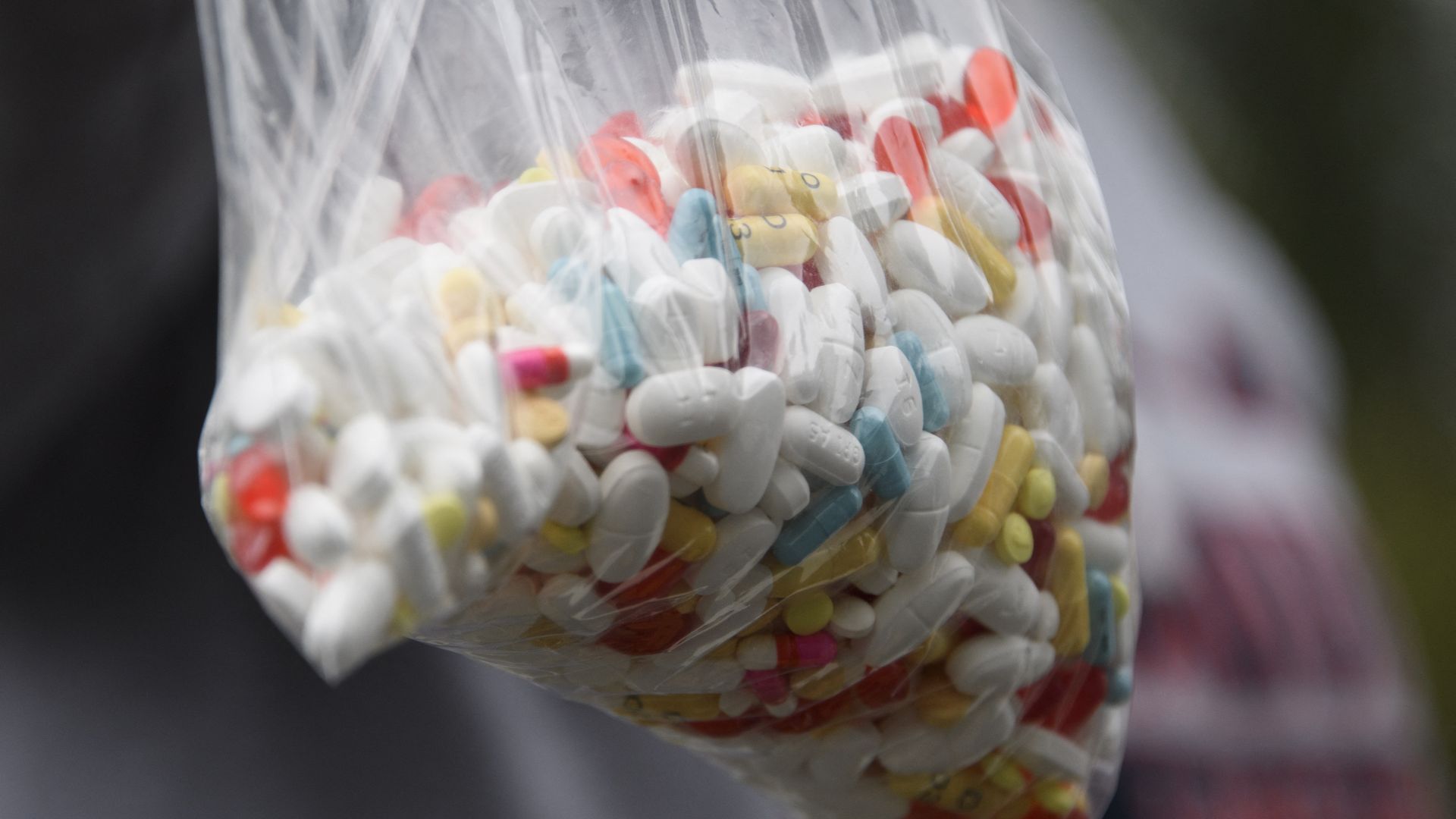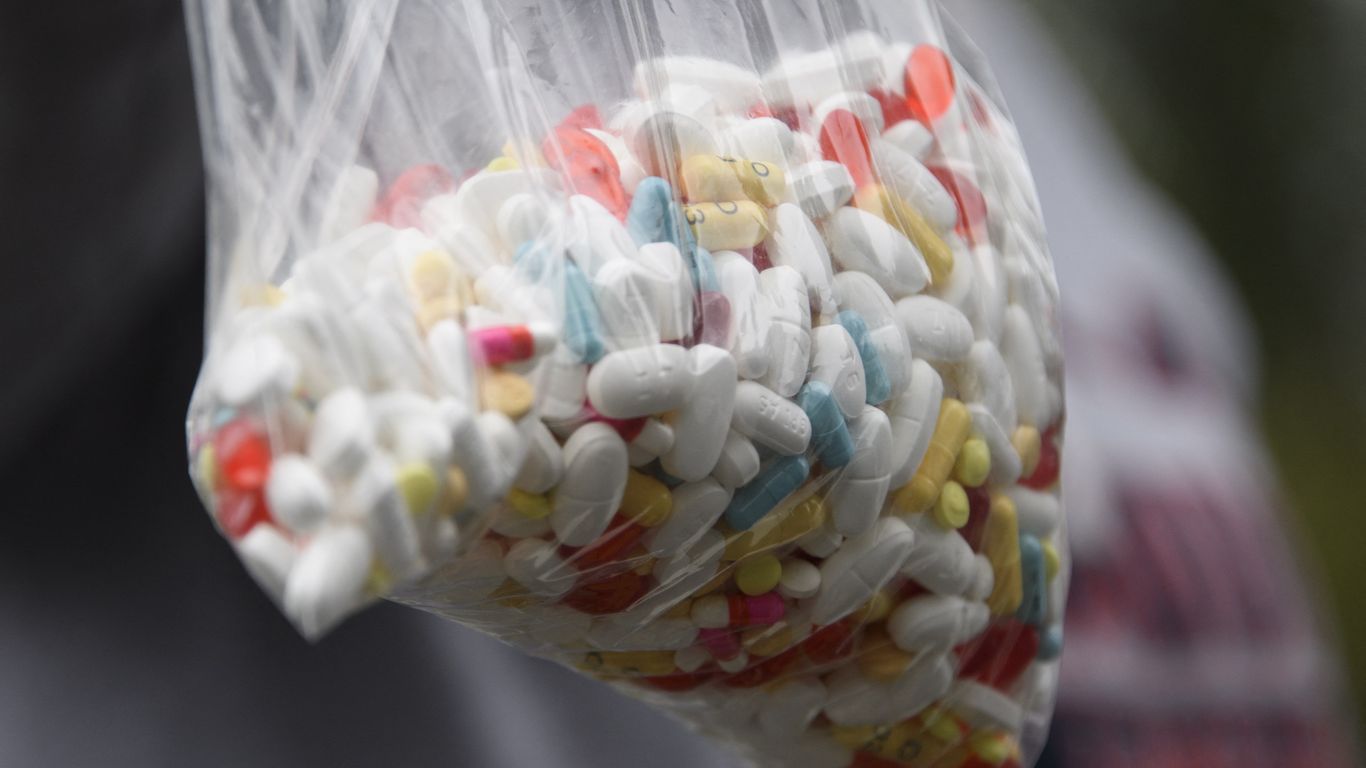
A bag of assorted pills and prescription drugs dropped off for disposal on April 24, 2021 in Los Angeles, California. Photo: Patrick T. Fallon/AFP via Getty Images
The Drug Enforcement Administration (DEA) announced Tuesday that it seized over 379 million doses of potentially deadly fentanyl in 2022, including more than 50.6 million fentanyl-laced fake prescription pills and more than 10,000 pounds of fentanyl powder.
Why it matters: Fentanyl, a highly addictive man-made opioid that is 50 times more potent than heroin, is considered the deadliest drug threat in the U.S. — and a growing threat to teenagers.
- The DEA has documented a sharp nationwide increase in the lethality of fentanyl-laced fake prescription pills in particular.
- "Just two milligrams of fentanyl, the small amount that fits on the tip of a pencil, is considered a potentially deadly dose," the agency noted in a press release.
Details: The trafficked fentanyl is primarily mass produced at secret factories in Mexico with chemicals largely sourced from China, according to the DEA.
- The pills are often "made to look identical to real prescription medications — including OxyContin®, Percocet®, and Xanax® — but only contain filler and fentanyl," the DEA said.
- Given their prevalence online, the DEA warned that people should only use medication directly prescribed by a trusted medical professional and dispensed by a licensed pharmacist.
What they're saying: Administrator Anne Milgram said the DEA's 2022 seizures are "enough deadly doses of fentanyl to kill every American."
- "DEA’s top operational priority is to defeat the two Mexican drug cartels — the Sinaloa and Jalisco (CJNG) Cartels — that are primarily responsible for the fentanyl that is killing Americans today," Milgram said in a statement.
The big picture: Illegal fentanyl is now the leading cause of death for people in the U.S. ages 18 to 49, a Washington Post investigation found.
- The epidemic poses a growing threat to teens, who officials say may more frequently encounter the drug disguised in unexpected forms.
Go deeper: Opioid abuse treatments don't reach those most at risk
Source: Read Full Article
